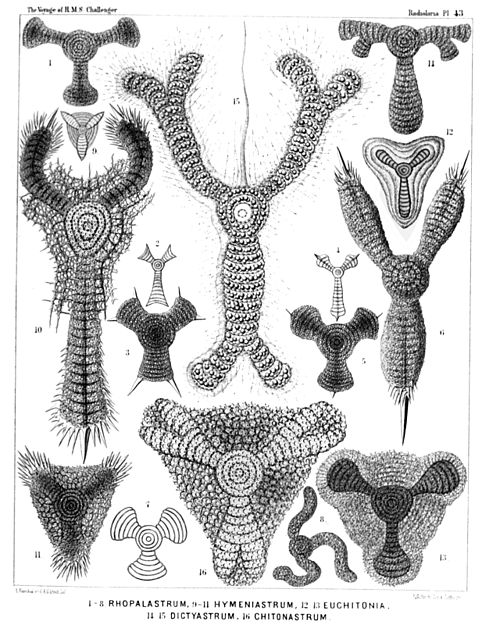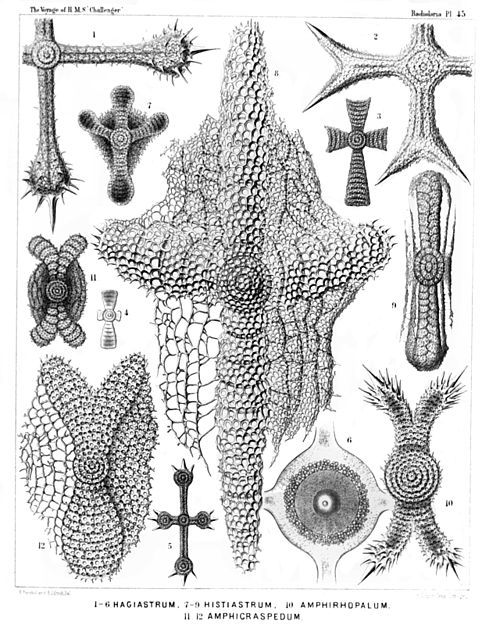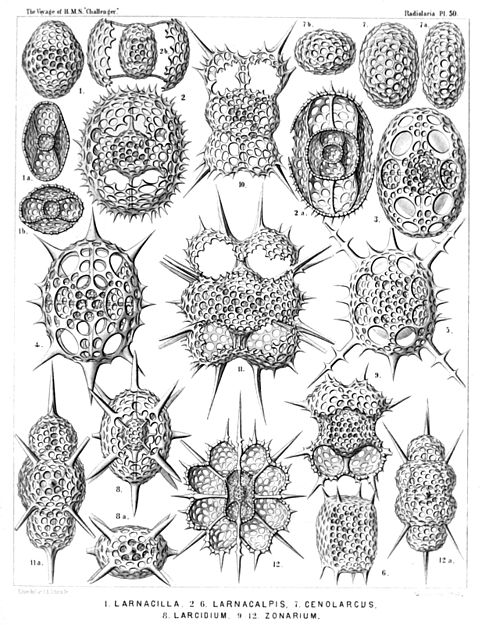PLATE 41.
Legion SPUMELLARIA.
Order DISCOIDEA.
Families Porodiscida et Spongodiscida.
|
|||||||||||||||||||||||||||||||||||||||||||||||||||||||||||||
PLATE 42.
Legion SPUMELLARIA.
Order DISCOIDEA.
Family Porodiscida.
|
|||||||||||||||||||||||||||||||||||||||||||||||||||||||||||||||||
PLATE 43.
Legion SPUMELLARIA.
Order DISCOIDEA.
Family Porodiscida.
|
||||||||||||||||||||||||||||||||||||||||||||||||||||||||||||||||||||||||||||||
PLATE 44.
Legion SPUMELLARIA.
Order DISCOIDEA.
Family Porodiscida.
|
|||||||||||||||||||||||||||||||||||||||||||||||||||||||||
PLATE 45.
Legion SPUMELLARIA.
Order DISCOIDEA.
Family Porodiscida.
|
||||||||||||||||||||||||||||||||||||||||||||||||||||||||||||||||
PLATE 46.
Legion SPUMELLARIA.
Order DISCOIDEA.
Family Porodiscida.
|
|||||||||||||||||||||||||||||||||
PLATE 47.
Legion SPUMELLARIA.
Order DISCOIDEA.
Family Porodiscida.
|
||||||||||||||||||||||||||||||||||||||||||||||||||||||||||||||||||||
PLATE 48.
Legion SPUMELLARIA.
Orders PRUNOIDEA et DISCOIDEA.
Families Ellipsida, Artiscida, Spongurida, Cenodiscida, Porodiscida et Pylodiscida.
|
||||||||||||||||||||||||||||||||||||||||||||||||||||||||||||||||||||||||||||||||||||||||||||||||||||
PLATE 49.
Legion SPUMELLARIA.
Order LARCOIDEA.
Families Lithelida, Streblonida, Phorticida et Soreumida.
|
||||||||||||||||||||||||||||||||||||||||||||||||||||||||||||||||||||||
PLATE 50.
Legion SPUMELLARIA.
Order LARCOIDEA.
Families Larcarida, Larnacida et Zonarida.
|
||||||||||||||||||||||||||||||||||||||||||||||||||||||||||||||||||||||||||||||||||









